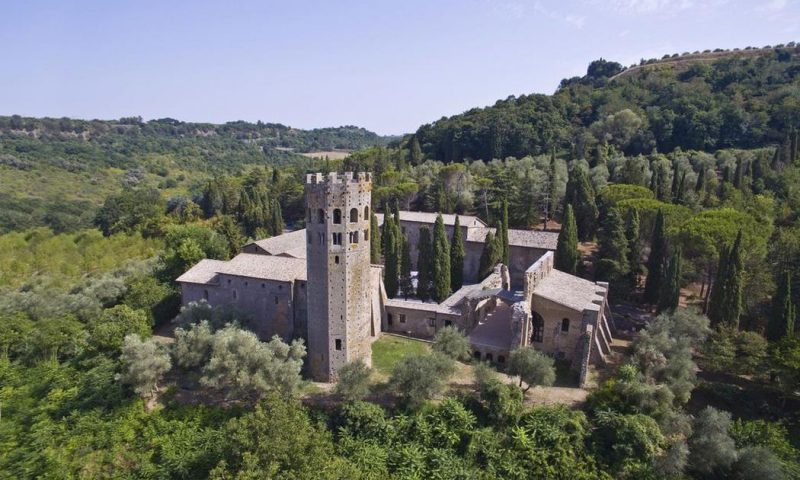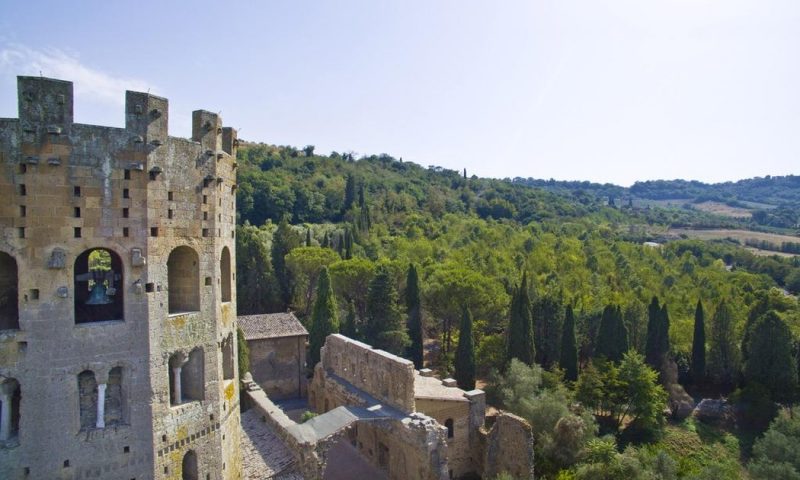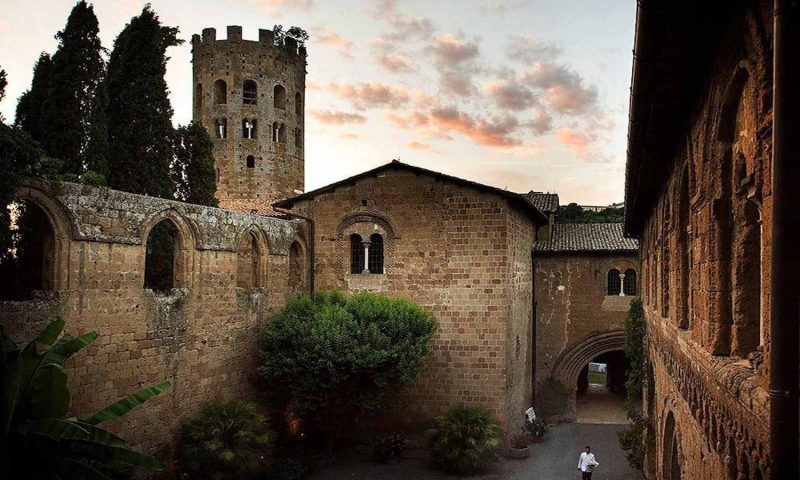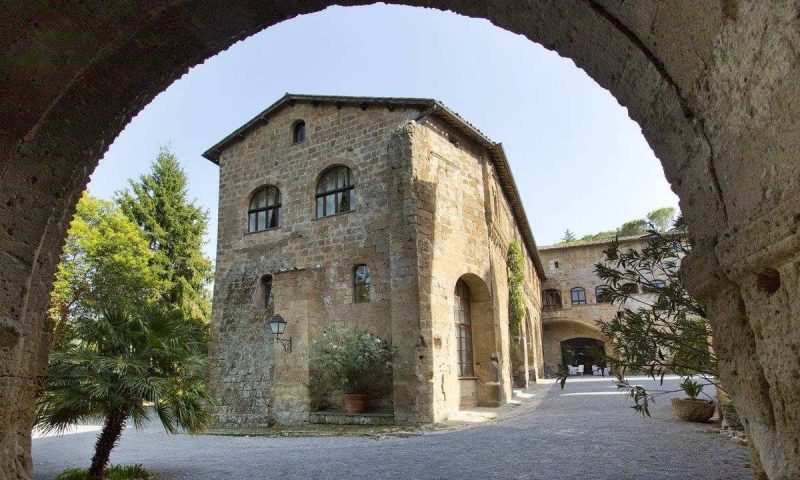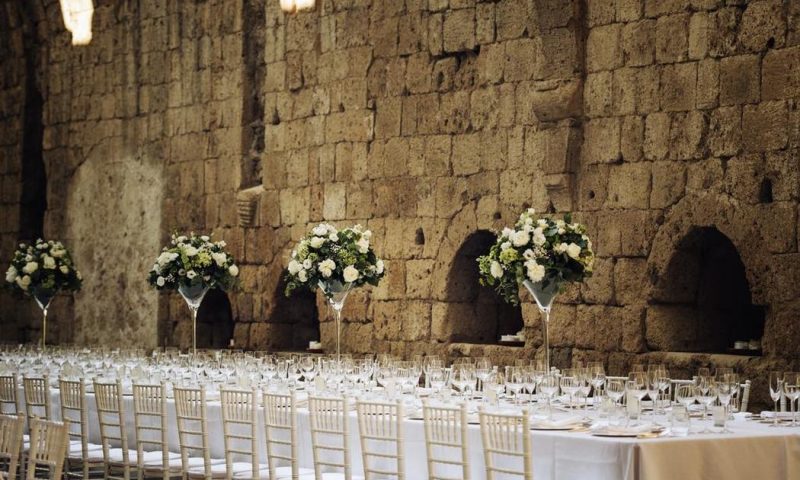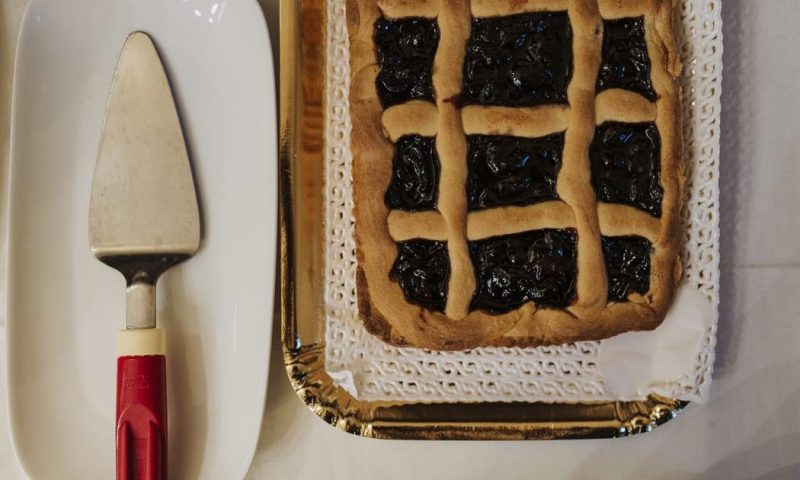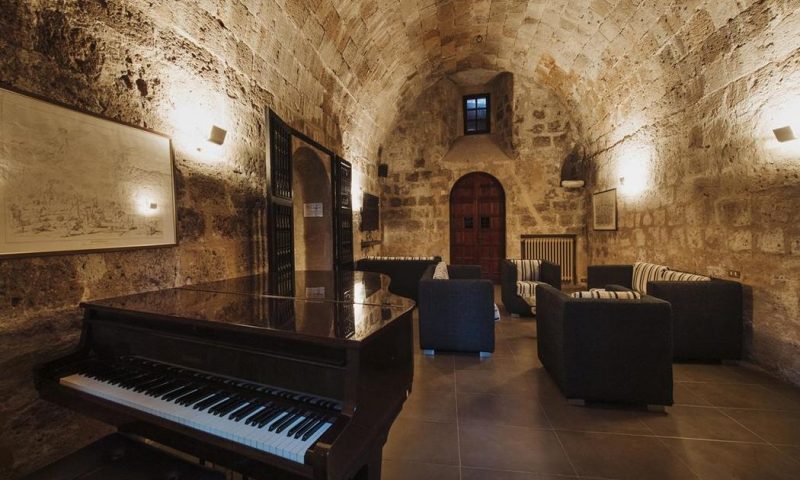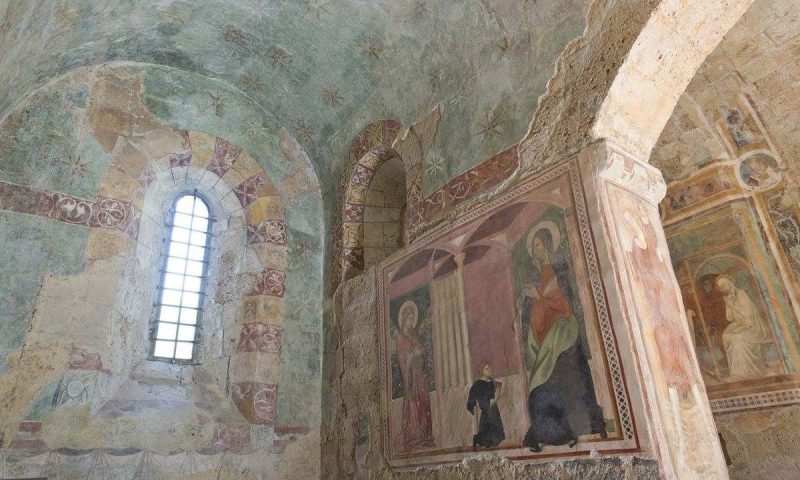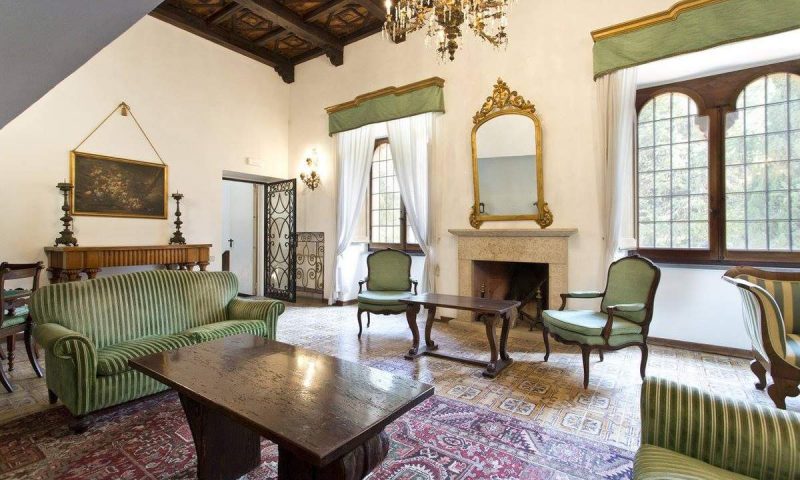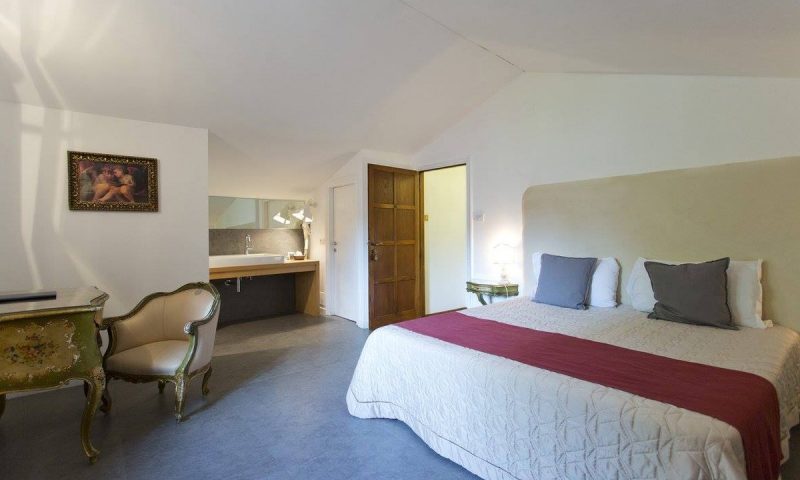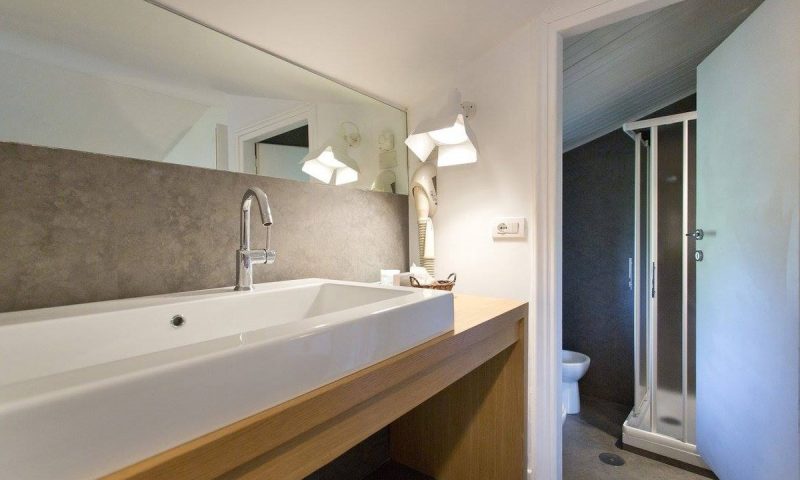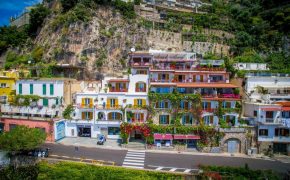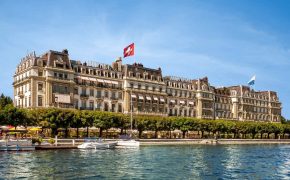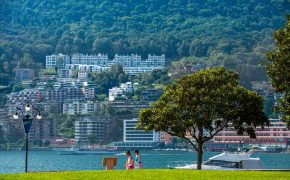The Badia di Orvieto, four-star hotel. This renowned historical residence is an ideal place for a stay immersed in the scenario of the green Umbrian countryside, offering a unique sense of well-being.
Orvieto, ancient land of the Etruscans, lies on the main communication routes Florence/Rome, and is a crossroads of culture and traditions from the Val d’Orcia to Tuscia and thermal spas and baths. A site favoured by international tourism, Orvieto, with its heritage of art and its fascinating cultural events, is one of Italy’s outstanding attractions.
The 22 rooms and 5 suites of the hotel overlook the courtyards of the ancient abbey, the spacious park, and the hills clothed in olive trees and rows of grapevines with the tufa plateau and its majestic Cathedral rising up in the background.
No better place can be found than the abbey for private events, celebrations and wedding receptions. It offers top quality service, with the restaurant, a swimming pool, tennis court and hotel bar.
The Badia, whose origins make it qualify as the oldest hotel in Italy, offers hospitality to the guests of today, mindful of the saints and prelates who came here in the past for meditation and holidays.
Careful restoration of the architectural features of the original Benedictine abbey of 1100 have made it a hotel that is a haven of peace and quiet, yet the centre of Orvieto with its medieval marvels is only ten minutes away. The rooms, furnished in classic style, including pieces of antique furniture, each have a personality of their own.
Geographically the location of the Badia is strategic, and available activities range from excursions into nature, visits to archaeological sites and the neighbouring art cities, to participating in tastings and events in the renowned wineries and traditional olive mills.
The Spas and Parks of the Waters of Upper Lazio and Tuscany are within easy reach. In two hours one is in Florence, and Rome as well as Siena are no more than an hour and a half away. It takes but an hour to reach Montalcino, Montepulciano and Pienza, and half an hour to get to Civita di Bagnoregio and the lake of Bolsena.
La Badia has always had a vocation for hospitality: the roots of its new life go deep into the past, when La Badia, once a place of worship and work, became a residence for cardinals and popes.
The recovery of the historical past of La Badia was not limited to the restoration of the architectural structure, but included rediscovering local culinary traditions now brought to new life in our welcoming and stylish restaurant.
Guests can savor the unique hospitality of Orvieto and Umbria in this luxurious four star hotel where a new chapter has been written in the long history of hospitality of La Badia of Orvieto, offering a repast to monks and pilgrims who paused there in their travels.
LOCATION
The guests of La Badia di Orvieto can live unforgettable moments, surrounded by the green hills of Umbria, amidst olive trees and vineyards. They can trace the steps of men who left lasting marks in history, wandering through these imposing structure now made perfectly welcoming into a four star luxury hotel.
In the summer nights it is wonderful to walk amidst the porticoes and the cloister lit by flickering torches. Personalities of the world of culture and politics as well as lovers of art come to stay at La Badia within its fortified tufa walls and the surrounding park that affords a wonderful view of Orvieto.
THE HISTORY
The first Abbey was built at the end of the 6th century around the primitive church of San Silvestro by the noble Lombard Lady Rotruda. An old legend says that Saint Severo died and his remains were brought to Orvieto. Lady Rotruda, wanting to seize them, touched the coffin, however her hand was trapped.
To have it released she was compelled to promise the founding of the abbey and a deserving burial to the monk Saint Severo. This is the legendary origin of the Abbey of Saints Severo and his disciple Martirio. The current Abbey was built in the 12th century on the site of the 6th century building.
After the long period of administration by the Premonstratensian Canons, a number of commendatory abbots succeeded each other at the abbey of Orvieto, first among them Cardinal Pietro Barbo.
Other notable men who walked along these corridors were men like Cardinal Nicolaus von Kues, known as Cusano, Simoncelli, Scipio Borghese, Aldobrandini, Barberini and Altieri.
For the people of Orvieto, the Abbey of Saints Severo and Martirio has always been simply “La Badia”. The imposing twelve-sided tower built in 1103 is a symbol of the whole structure, the first of it’s kind in the architecture of the times.
The tower, with its helicoidal stairs, is 28 meters high and was built by Matilde di Canossa. Matilda a medieval noblewoman was the principal Italian supporter of Pope Gregory VII during the investiture controversy.
She is one of the few medieval women to be remembered for her military accomplishments. She is sometimes called La Gran Contessa (“the Great Countess”) or Matilda of Canossa after her ancestral castle of Canossa.
For almost three centuries the Badia di Orvieto has belonged to the Umbrian noble family descending from Saint Claire of Assisi, the Counts Fiumi di Sterpeto. In the late ’60, the Abbey came to a new life through challenging restoration works that were essential for the preservation of the structure.
Together with the consolidation works, several areas were modified respecting the unique architectural features to create a luxurious four star hotel and a restaurant of exceptional quality and ambiance.
THE ROOMS
The windows of the rooms look out onto the extraordinary view of the tufa rocks of Orvieto. The beautifully designed 21 rooms and 5 suites are equipped with all the modern conveniences expected of a four star country hotel and furnished with a tasteful mix of antiques.
THE SUITES
The 5 suites of La Badia di Orvieto are ideal for a luxurious stay in the Umbrian country side. All have fine antique furniture, comfortable living rooms with lush sofas and upholstered chairs, large bathrooms, some with Jacuzzis, some with two bathrooms. All afford wonderful views of Orvieto or of the picture-perfect Umbrian countryside.
SPA & WELLNESS
Imagine a renewing spa experience in the most convenient of locations, your guest room. A relaxing spa atmosphere is created…a bottle of Umbrian mineral water, a relaxing herbal tea, ambient music as well as a selection of plant based aromatherapy oils and room sprays allowing you to choose your own scent for the treatment.
Whether you need to unwind after a day of meetings, a long flight, or jump-start your vacation, our highly skilled professional therapists can banish stress and tension to help you indulge in the health and wellness you need. Our customized treatment menu works with professional high quality products, all devoted to your beauty and senses.
The former Oratorio del Crocefisso (Oratory of the Crucifix) with a magnificent fresco of the Crucifixion with its moving “Cristo Patiens” on the wall has been turned into an imposing Conference Hall.
WEDDINGS IN UMBRIA
The extraordinary 12th century Romanesque church, adorned with 12th and 14th century frescoes, is a perfect setting for romantic weddings.
The rare and historic atmosphere of the buildings, the beauty of the frescoes and the lush surroundings leaves you with tender and touching memories. Elegant receptions and special events are organized in our lounges or in the beautiful lush gardens and courtyards.
The Church of Romanesque origin has a precious Cosmati work floor at the foot of the altar a carpet of mosaic tesserae in white marble, red porphyry and dark-green serpentine, still perfectly preserved trough the centuries. The frescoes adorning the walls of the Sacristy date back to the 13th and 14th centuries.
ORVIETO
Orvieto, known as Velzna in Etruscan times, rises up in a landscape of volcanic rock, only 100 km from fashionable Rome and 160 km from Florence. This part of Umbria has a strong tradition in the cultivation of olives and grapes.
Vineyards are a prominent feature of the landscape and grapes are portrayed on the facade of the Duomo as well as in the light weft of the lace made with Irish linen thread. On arriving at this tall and strange town (see Fazio degli Uberti and Dittamondo), the dizzying heights of the cliff rise up to meet the visitor, and it is easy to get lost in the maze of narrow winding lanes.
This feeling leaves us only when admiring the imposing noble palaces and monuments which are strongly anchored to the rock and visibly represented the political power of the day.
Of particular mention is the ‘Palazzo del Popolo’ built in the second half of the 12th century to accommodate meetings of the city government. It later became the main residence of the Capitano del Popolo, the highest and most powerful authority of the town.
But the palace history goes back a long time: in the underground of the palace, besides a cistern and ruins of the medieval water system, the base of an Etruscan building was found, evidence of the centuries of history of the town which fortunately have not been cancelled.
The most intriguing aspect of the town is certainly represented by that age-old atmosphere still intact, effortlessly blending with the modern era.
At the foot of the Fortezza dell’Albornoz (14th century ) the ‘Funicolare’ was built at the end of 1800, a comfortable link, a means of communication with the top of the cliff, which has been modernized and connects in a few minutes the centre of the town to the railway station.
More recently tunnels with escalators and lifts that go through the rock take us from the ‘Campo della Fiera’ parking to the town centre.
An excursion through the underground of Orvieto is definitely worth while: the caves, shafts and wells sunk into the tufa rock give one a special feel of the town, whose heart is Piazza del Duomo, with its imposing Gothic Cathedral and treasures such as the ‘Cappella di San Brizio’, Saint Brizio Chapel, with frescos by Fra Angelico and Luca Signorelli.
Equally important is the ‘Torre di Maurizio’, Maurizio Tower, erected between 1347 and 1348 by the ‘Fabbrica dell’Opera del Duomo’, with the first clock in construction yards. Its peculiarity is the bronze automaton called Maurizio who strikes the bell with a hammer every hour.
Visits to the National Archeological Museum, the Claudio Faina Museum (it contains one of the most important collection of Etruscan antiquities in Italy) and the museum devoted to the sculptor Emilio Greco, all on the piazza, are not to be missed.
There are many interesting handicraft shops, wine shops and coffee-bars along the street that goes from Piazza del Duomo to Corso Cavour.
Turning left one arrives at Piazza della Repubblica and then on to another wonderful part of the town, the medieval quarter with Via Filippeschi, the so-called Cava, Ripa Medici, San Giovenale and San Giovanni. The original town-plan has remained untouched in this area.
Of particular note are the Church of San Giovenale in Romanesque-Lombard style with a nave and two aisles, dating to the 11th century and with frescoes by Orvieto painters, the cloister of San Giovanni (now the ‘Palazzo del Gusto’ a gastronomical mecca) and the ‘Pozzo della Cava’ (medieval well).
Don’t forget to book a giuded tour to the historical Mancinelli Theatre, an important cultural venue of the town.
VILLAGES & CASTLES
The castle, the municipal palace , ascribed to the Architect Calderini from Perugia, are worth visiting in the village of Fabro (A1 exit). The local products include the white truffles which grow naturally in the surrounding woods.
To the north of Fabro there is Carnaiola, a medieval village with a castle (12th century) with walls built in the 16th and 17th centuries. The castle of Parrano was built in the year 1000 on the ruins of a Roman village.
In this area you can visit the imposing natural caves called ‘Tane del diavolo’ with the remains of the Upper Paleolithic and Bronze Age. In Monteleone di Orvieto one should visit the Collegiata, the Church of SS Crucifix and the theatre ‘Dei Rustici’.
Close to the village of Montegabbione is the Monastery of the ‘Scarzuola’ (12th century) as well as the ‘ideal town’, an extraordinary architectural complex, designed by the architect Tommaso Buzzi. A short distance from La Badia is the village of Porano with the interesting Villa Paolina and the Etruscan Necropolis.
Other important old Umbrian towns, such as Todi, Deruta, Assisi, Gubbio and the capital of Umbria Perugia, are within easy reach of Orvieto. In upper Latium not to be misses is Bolsena with its beautifull lake and and Civita di Bagnoregio, the famous “dying town”.
